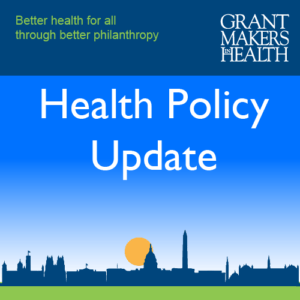Health Policy Update: May 15, 2025
In an effort to help our Funding Partners better understand the changing health policy landscape in the new administration and Congress, Grantmakers In Health (GIH) is expanding the GIH Health Policy Update newsletter to three issues per month. Working in collaboration with Leavitt Partners, a leading health care policy consultancy, we are adding new installments of the newsletter on the first and third Wednesdays of the month, while we will continue to partner with Trust for America’s Health on the installment released on the second Wednesday of the month.
Bridging, Building, and Beyond: Breaking Down Barriers to Health Improvement
This resource portfolio from GIH’s 2008 annual meeting Bridging, Building, and Beyond: Breaking Down Barriers to Health Improvement, features six essays written by GIH staff.
Establishing Public-Private Partnerships for Maternal and Child Health
Established in 1935 under Title V of the Social Security Act, the Maternal and Child Health (MCH) Services Block Grant is one of the largest federal block grant programs and a critical source of flexible funding for public health. Commonly referred to as Title V, the MCH block grant is used to support core MCH public health functions in states, assess needs, and identify and address gaps in services.
Strengthening the Performance and Effectiveness of the Public Health System
The public health system is the backbone of our nation’s health, but the existing public health infrastructure is inadequate to address the health challenges currently facing this country. Strengthening the Performance and Effectiveness of the Public Health System shares how health funders can improve the functionality of the public health system and develop capabilities, services, and competencies that enhance public health practice.
Connecting the Dots: Developing a Holistic Picture of Children’s Health
Health care services are one of many supports and resources needed to support healthy children. In recognition of the need to take a more comprehensive approach to child health, health funders are being challenged to work outside traditional purviews.
Pediatric Medical Homes: The What and Why of It All
The “medical home” encompasses the places, people, and processes involved in providing comprehensive primary care services. Medical homes replace episodic patient care with a holistic approach fostering ongoing physician-patient relationships, systematic care coordination, and addressing the “whole person.” They also must deliver physician-directed patient care that is accessible, family-centered, comprehensive, continuous, coordinated, compassionate, and culturally effective.
Health Information Technology: Increasing Quality and Access within Safety Net Providers
Health foundations are uniquely positioned to help safety net providers reach their full health information technology potential, and by providing various means of support, foundations can help to bridge competitive tensions that often derail cooperation.
Join & Become a GIH Funding Partner Today!
Click here to learn more about becoming a GIH Funding Partner and joining the largest national network of health funders.

